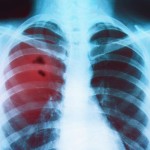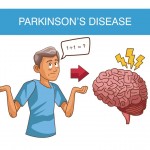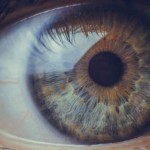Epilepsy
As per WHO, epilepsy is a chronic disorder characterized by recurrent seizures which may vary from a brief lapse of attention or muscle jerks, to severe and prolonged convulsions.
The seizures are caused by sudden, usually brief, excessive electrical discharges in a group of brain cells (neurons). In most cases, epilepsy can be successfully treated with anti-epileptic drugs. Epilepsy is a chronic non communicable disorder of the brain that affects people of all ages. WHO statistics shows that around 50 million people worldwide have epilepsy . It is very common in India especially in children.
Symptoms
The main symptoms of epilepsy are repeated seizures. There are many different types of seizure, depending on the area of the brain affected. Seizures can be classified into 2 categories depending on how much of the brain is affected. There are:
Partial seizures – Where only a small part of the brain is affected
Generalized seizures – Where most or all of the brain is affected. It is more common in children.
Symptoms of partial seizure include:
Changes in the way things look, smell, feel, taste or sound
An intense feeling that events have happened before (déjà vu)
Tingling sensation, or ‘pins and needles’, in arms and legs
A sudden intense emotion, such as fear or joy
The muscles in arms, legs and face may become stiff
Experience twitching on one side of your body
There are six main types of generalized seizure:
1) Absence seizure: It is also called petit mal, mainly affect children. It causes the child to lose awareness of his surroundings for up to 20 seconds. The child will seem to stare vacantly into space, though some children might flutter their eyes or smack their lips. The child will have no memory of the seizure. Absences can occur several times a day. Although they are not dangerous, they may affect the child's performance.
2) Myoclonic jerks: It is types of seizures that cause arms, legs or upper body to jerk or twitch, much like an electric shock. It often only last for a fraction of a second. Myoclonic jerks often happen in the first few hours after waking up and can occur in combination with other types of generalized seizures.
3) Clonic seizure: It causes the same sort of twitching as myoclonic jerks, except the symptoms last longer, normally up to two minutes. The patient may get unconscious
4) Atonic seizure: It cause all muscles to relax, so there is a chance to fall on the ground. Facial injuries are common with this type of seizure.
5) Tonic seizure: Unlike an atonic seizure, tonic seizures cause all the muscles to suddenly become stiff. That can result in loss of balance and fall over, so injuries to the back of the head are common in this type of seizure.
6) Tonic-clonic seizure: It is known as grand mal, has two stages. In this body becomes stiff and then arms and legs begins twitching. Patient loses consciousness. The seizure normally lasts between one and three minutes, but can last longer.
Causes
Exact cause of epilepsy is still unknown but it is though that it involves some kind of brain damage. Epilepsy is caused when there are disruptions to the normal connections between nerve cells in the brain (much like disruptions in wiring of a complex electrical circuit), when there are imbalances of natural chemicals or neurotransmitters that are important to the signaling among nerve cells, or when there are changes in the membranes of nerve cells, including proteins called ion channels, that alter their normal sensitivity.
Some of these disruptions, imbalances, and changes may develop early in life, sometimes related to hereditary factors and sometimes related to early exposures and events.
There are three main categories of epilepsy:
Symptomatic epilepsy – There is a known cause for a person’s epilepsy, such as a head injury.
Idiopathic epilepsy – No apparent cause for epilepsy can be found despite investigations.
Cryptogenic epilepsy – like idiopathic epilepsy, no apparent cause can be found. However, there is strong evidence that this type of epilepsy may be the result of brain damage.
Diagnosis
The diagnosis of epilepsy usually requires that the seizures should occur spontaneously. However, certain epilepsy syndromes require particular triggers for seizures to occur. These are termed reflex epilepsy. For example, patients with primary reading epilepsy have seizures triggered by reading Photosensitive epilepsy can be limited to seizures triggered by flashing lights. Other precipitants can trigger an epileptic seizure in patients who otherwise would be susceptible to spontaneous seizures.
Diagnostic methods:
Magnetic resonance imaging scan (MRI): An MRI scan can often detect possible causes of epilepsy, such as defects in the structure of your brain or the presence of a brain tumor.
Electroencephalograph (EEG):An EEG test measures the electrical activity of the brain through electrodes placed on the scalp. During the test, patient may be asked to breathe deeply or close the eyes, as these actions could reveal unusual brain activity associated with epilepsy. Patient might also be asked to look at a flashing light, but the test will be stopped immediately if it looks like the flashing light could trigger a seizure.
Your diagnosis may vary so it is advisable to consult your physician for further diagnosis.
Treatments
Epilepsy is usually treated with medication prescribed by a physician; primary caregivers, neurologists, and neurosurgeons all frequently care for people with epilepsy. However, it has been stressed that accurate differentiation between generalized and partial seizures is especially important in determining the appropriate treatment . The mainstay of treatment of epilepsy is anti convulsant medications. However many a times it has certain effect on quality of life.
Medications: The older first-line Anti-epileptic drugs include sodium valproate, carbamazepine, phenytoin and phenobarbital. Newer AEDs include gabapentin, lamotrigine, levetiracetam, oxcarbazepine, tiagabine, topamax and vigabatrin. Levetiracetamis not recommended for children. Side effects of anti epileptic drugs include:
Nausea
Abdominal pain
Drowsiness
Dizziness
Irritability
Mood changes
Surgery: Epileptic surgery is also done in case of focal seizures that are resistant to the treatment.
Electrical stimulation: Vagus Nerve stimulation: consists of a computerized electrical device that connects to the vagus nerve in the neck. This device stimulates the vagus nerve at preset intervals and intensities of current. Efficacy has been tested in patients with localization-related epilepsy.
NHP just provides an indicative information for better understanding of health. For any treatment purpose you should consult your physician.
References:
Epilepsy Foundation
Epilepsy India
WHO









